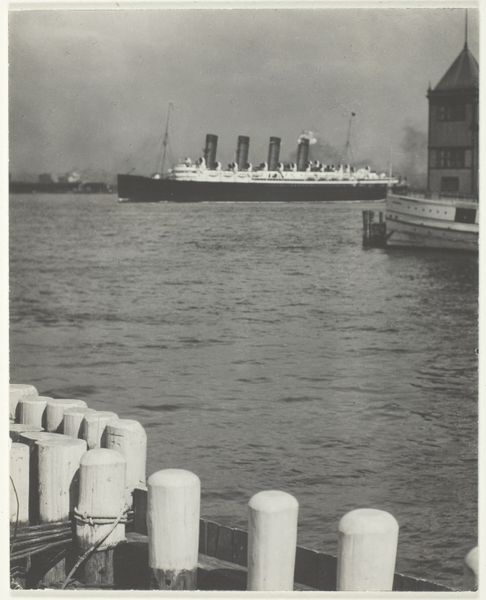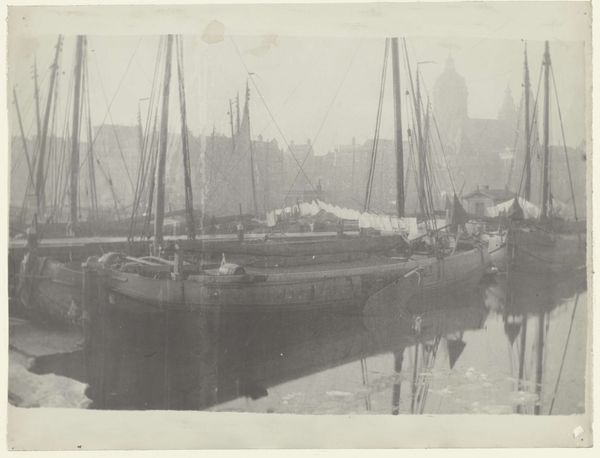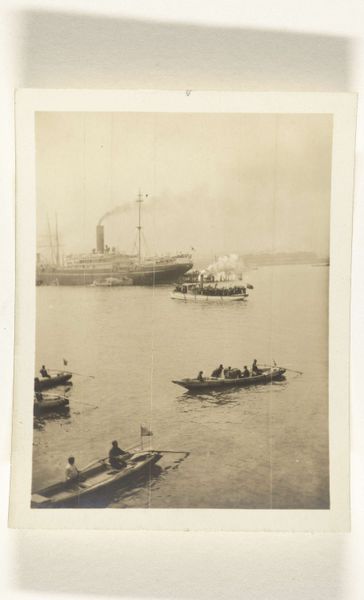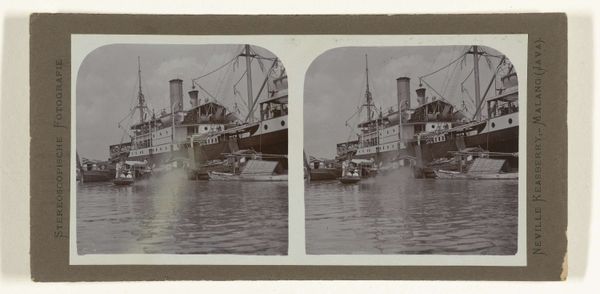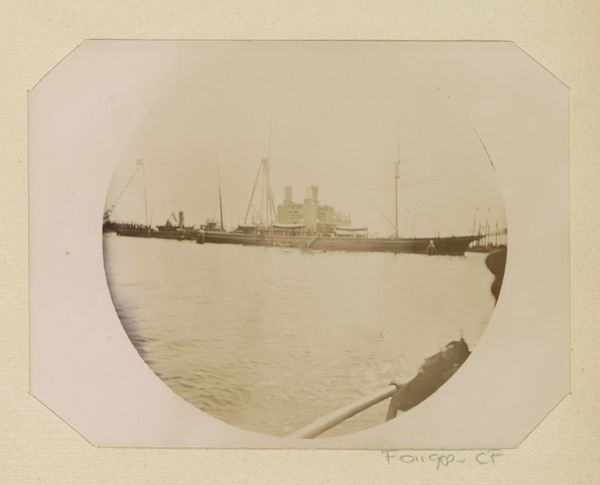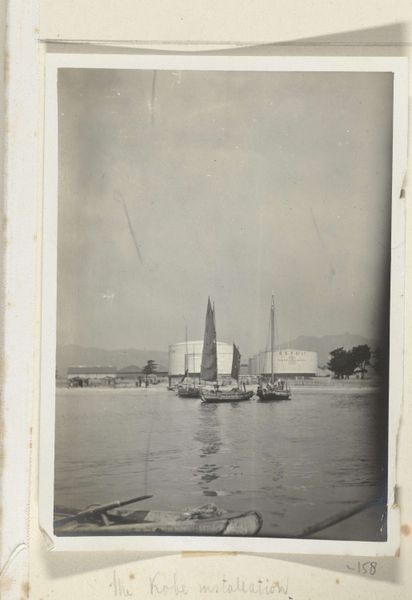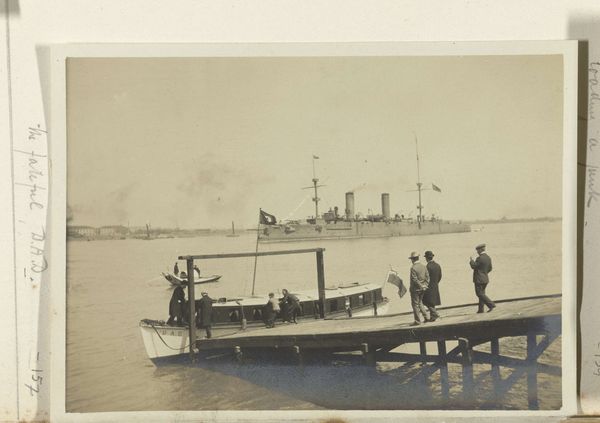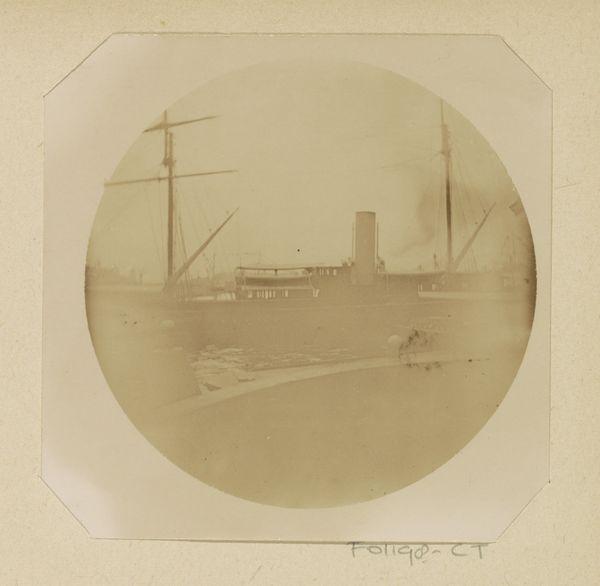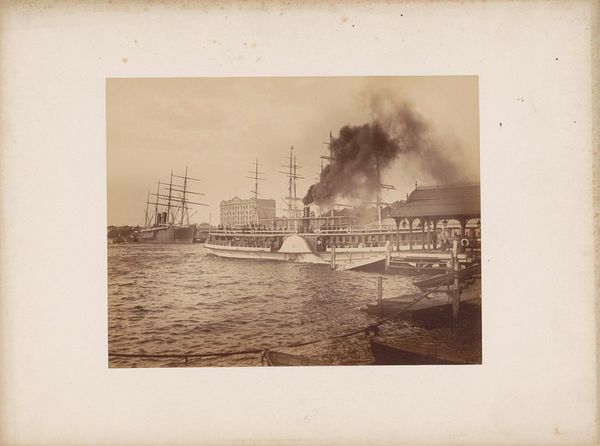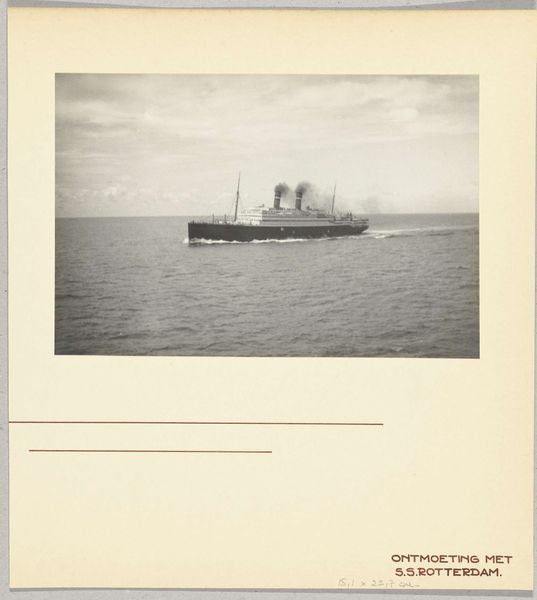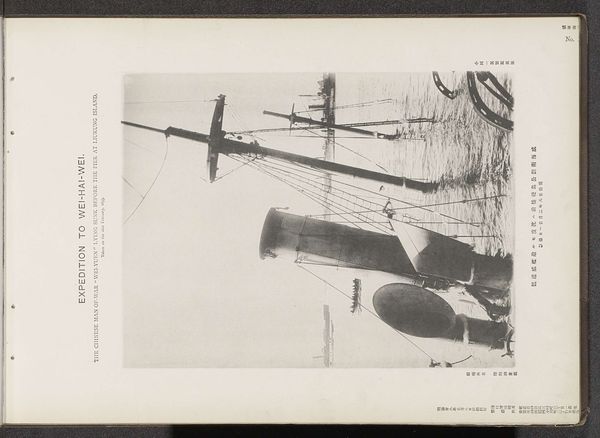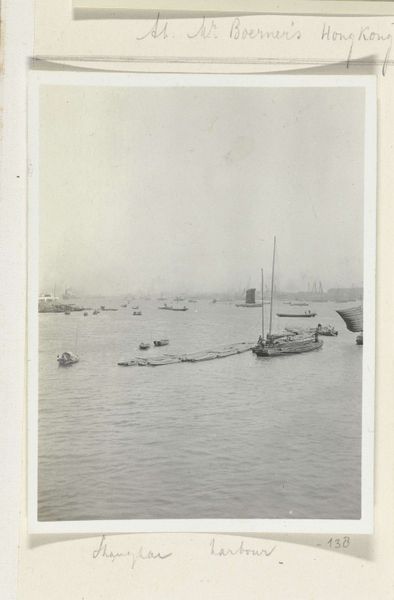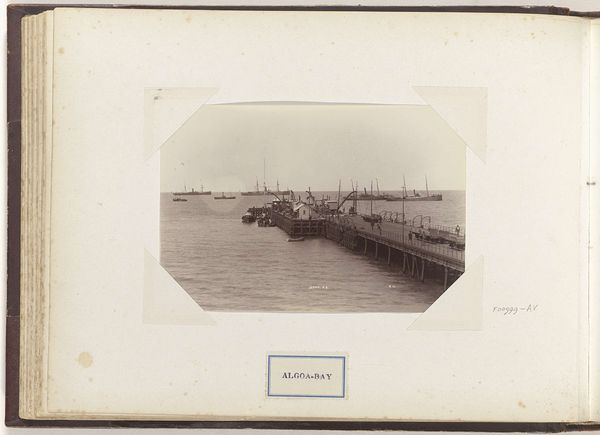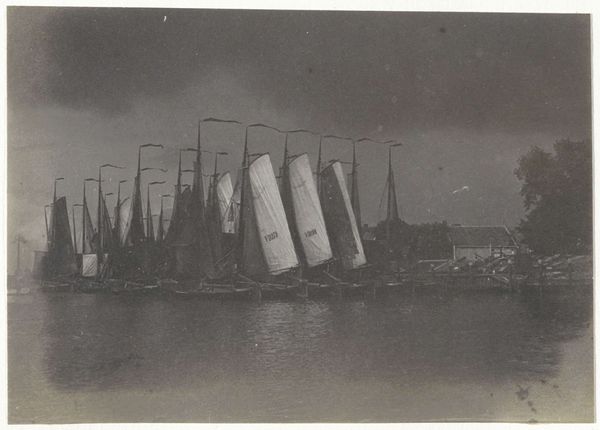
photography, gelatin-silver-print
#
ship
#
pictorialism
#
landscape
#
photography
#
historical photography
#
gelatin-silver-print
#
cityscape
#
modernism
#
realism
Dimensions: height 209 mm, width 164 mm, height 300 mm, width 209 mm
Copyright: Rijks Museum: Open Domain
Editor: This gelatin-silver print, “Gezicht op het schip de Mauretania in New York,” was created around 1910 by Alfred Stieglitz. It has a quiet, almost melancholic mood, despite the industrial subject matter. How do you interpret this work, considering its historical context? Curator: It’s a potent image, isn’t it? Stieglitz was deeply engaged with the rapid modernization of the early 20th century. I see this not just as a portrait of a ship, but as a symbol of transatlantic movement, of the complex relationship between Europe and America, and perhaps even of the anxieties surrounding progress and displacement. Think about who was likely on that ship. Editor: Immigrants, perhaps? People seeking new opportunities? Curator: Precisely. The Mauretania, a symbol of British engineering and power, would have carried a diverse population. Consider the socio-economic disparities inherent in that voyage. The experience of a first-class passenger versus someone traveling in steerage would have been vastly different. Stieglitz, coming from a privileged background, offers us one perspective, but what about the perspectives of those whose stories are less visible? Does the romanticized haze of Pictorialism, the photographic style Stieglitz was a champion of, inadvertently obscure those voices? Editor: That’s a fascinating point. It makes me reconsider the aesthetic choices Stieglitz made. I had previously viewed the softness as purely artistic. Curator: These choices were never neutral. Pictorialism itself was a reaction to the perceived coldness of scientific photography. What is gained, and what is lost, when reality is filtered through an artistic lens? These are critical questions for any student of art history. Editor: This has definitely given me a broader perspective on Stieglitz’s work and the role of art in representing complex social realities. Curator: And for me, a renewed appreciation for the power of photography to spark these crucial conversations.
Comments
No comments
Be the first to comment and join the conversation on the ultimate creative platform.
